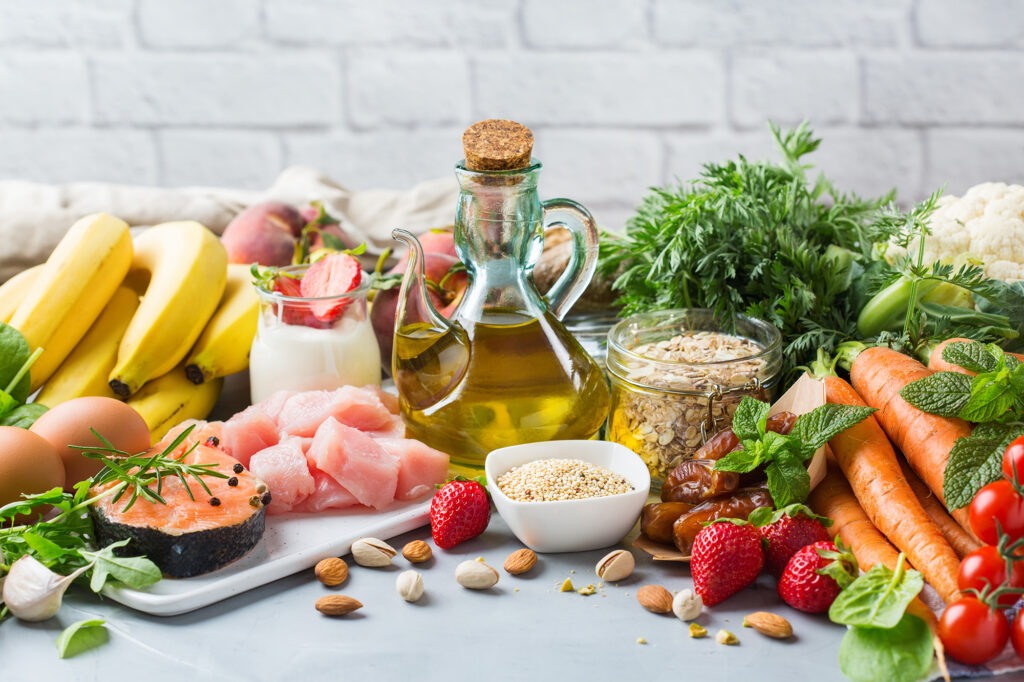Parkinson’s disease or PD is a neurodegenerative disorder affecting the motor function of the body through motor symptoms which include; tremors, rigidity, bradykinesia as well as the non-motor symptoms that include; depression and cognitive impairment. Indeed, medication and therapy are the main approaches to the treatment of Parkinson’s disease, but diet can also been considered as an important factor. Nutrition affects the health status, symptoms, and the efficacy of the treatment in a positive way when the right diet is followed. This ultimate guide by Sukino Healthcare shall offer a detailed perspective on how to design an Indian diet plan for Parkinson’s disease.
Understanding Parkinson’s Disease and Nutrition
Parkinson’s disease is a disease that patients’ nervous systems and results in a shortage of dopamine within the patient’s brain. Food choice is also a noteworthy determinant in the care for Parkinson’s patients since it may affect aspects of digestion, medication intake and overall well-being. A diet based on the guidelines for people with Parkinson’s should meet the requirements of such patients to allow for the minimization of such manifestations and ensuring an acceptable level of energy.
The Role of Antioxidants
Antioxidants are vital in preventing or reducing oxidation, as this is thought to have an influence on Parkinson’s disease. Based on the contents, Indian diet with fruits, vegetables, and spices may supply a high level of antioxidants.
Fruits and Vegetables
Avoid fat foods and increase the intake of different colored nutritious fruits and vegetables in the diet. Fruits with skin such as berries, oranges, and melons are packed with antioxidants as well as spinach, carrots, and bell peppers. These foods can decrease the levels of oxidation and shield neurons from destruction.
Spices
Indian food is famous for the incorporation of spices and some of the most popular spices have elements that have antioxidant capabilities. Hence, due to its potent anti-inflammatory as well as antioxidant properties, compounds such as turmeric containing curcumin is desirable. Culinary herbs such as cumin, coriander, and ginger can be used in preparation of foods to improve on the taste and the nutritional value as well.
Importance of Fiber
Gastrointestinal and sexual dysfunction are non-motor manifestations of Parkinson’s disease and constipation is experienced most frequently. The good news is that this kind of problem can be easily address through the regulation of fiber intake.
Whole Grains
The fibre level can be enriched by consumption of whole grains like brown rice, whole wheat, oats, millets and so on. These foods assist in the provision of a quality bowel movement and enhance digestion.
Legumes
Legumes, which include vegetables such as beans and lentils, or vegetables such as peas are very rich in both fiber as well as protein. Some of the examples of foods containing such fats include; Incorporating these in the diet help boost gut health and maintain the energy.
Hydration
Hydration has functional benefits for the human body and can reduce some of the manifestations of Parkinson’s disease, for example, constipation and side effects of medications.
Water
It is therefore important that adequate amounts of water should be taken daily. It is recommended that one should try and drink not less than 8-10 glasses of water to meet the body requirements.
Herbal Teas
Some of the teas include ginger tea, green tea, chamomile as they have been noted to have the ability to soothe the affected area. These teas can also offer antioxidants and other health promoting compounds to a person.
Protein Management
Diet also plays an important in the life of Parkinson’s disease patient and this involve the need to balance the intake of proteins and the time that is taken in the consumption of proteins.
Timing of Protein Intake
Protein also has an impact on levodopa, a medicine taken by Parkinson’s disease patients. Again, it is suggested most protein should be eaten in the evening, while little or no protein should be taken during the course of the day to help with the medication’s efficacy.
Protein Sources
Eat more of fishes, chicken, tofu, and dairy products while avoiding fatty meat products. The intake of other classes of foods such as the proteins that contain plant sources such as beans and legumes can also be incorporated.
Healthy Fats
Conscious use of fats for instance through taking fish, nuts and olive oil helps in nourishing the brain and decreasing inflammation.
Omega-3 Fatty Acids
The foods that are filled with omega-3 fatty acids are flaxseeds, chia seeds, walnuts, and fish like salmon which can minimize inflammation and enhance brain functions.
Nuts and Seeds
It is recommended that nuts and seeds should be taken in their different types because they contain important fats, vitamins and minerals.
Balanced Meals
Developing meals that incorporate all the food groups can also help in filling the nutrient gap for the day.
Meal Planning
The patient should choose his/her meals so that all the food groups, particularly the carbohydrates, proteins, and fats, are well incorporated into the meals. For example, one could have a bowl of brown rice, grilled veggies on the side, a bowl of dal, and a WG of yogurt.
Portion Control
Controlling portion sizes often ensures that the required amounts to be eaten are not exceeded to lead to the ‘all or nothing’ eating decisions. Another way of managing energy intake is to have many but small meals in a day than having few large meals all at once.
Avoiding Certain Foods
There are foods that can worsen the condition or chemotherapy drugs on the patient’s body.
Processed Foods
Reducing foods that are processed and contain high levels of sugar, salt and unhealthy fats is very important. Some types of foods adversely affect health and contribute to gaining weight and other problems.
High-Sugar Foods
Reduction of foods high in sugar will go a long way in avoiding feelings of low energy and mood swings due to changes in blood glucose.
Incorporating Ayurvedic Principles
Parkinson’s disease is a neurological disorder that has its treatment in the Indian Ayurveda, a traditional system of medicine where is highlighted that adherence to particular diets is helpful in the treatment of the illness.
Balancing Doshas
Ayurveda consider the schemes of temperatures, taken with food, for a rebalance of the doshas (body energies). Parkinson’s patient shall ideally follow the pacifying vata diet because it represents dryness and instability.
Ayurvedic Foods
It is important to consume foods that are warm in nature and can help in filling the body with energy, such as ghee, warm milk, and cooked vegetables. Reduce food intake that has cold and dry entities as these create Vata dosha aggravation.
Conclusion
Parkinson’s disease diet management entails its approached from a holistic perspective by taking into consideration the requirements of an individual patient. Through the consumption of antioxidant flavoured foods, moderation of fiber, regular water intake and inter-balancing of proteins and healthy fats, a positive health in Parkinson’s disease can be enhanced. For Parkinson’s disease, Sukino Healthcare aims at ensuring adequate care and direction to manage the problem in an efficient way. This paper aims to establish that through nutrition and general health management, a well-planned diet can effectively complement medical management and lifestyle changes in Parkinson’s disease patients.
We are India’s first comprehensive continuum care provider. We provide multidisciplinary out of hospital care to acute and post-acute and chronically ill patients at our critical care facilities and your home.


